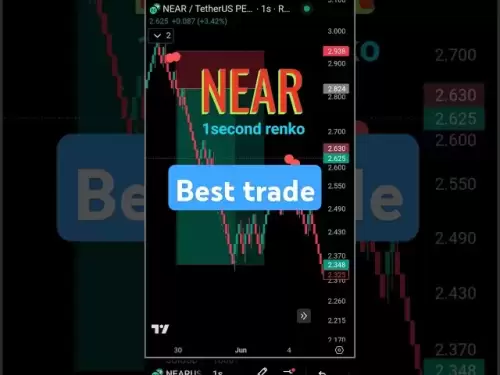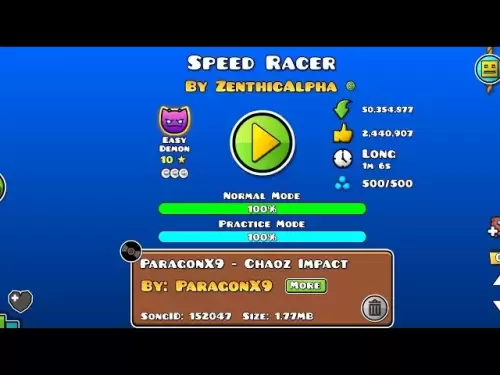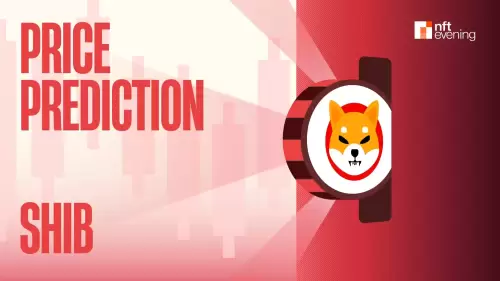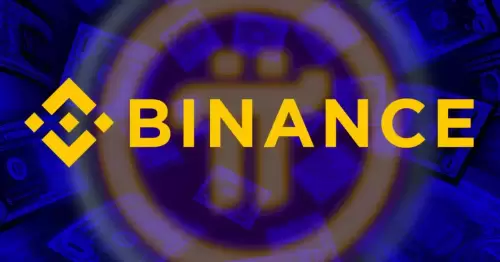 |
|
 |
|
 |
|
 |
|
 |
|
 |
|
 |
|
 |
|
 |
|
 |
|
 |
|
 |
|
 |
|
 |
|
 |
|
Cryptocurrency News Articles
Bitcoin Solaris: The Next Generation of Parachain Systems
May 14, 2025 at 10:27 pm
Polkadot introduced the parachain system to solve multi-chain scalability through a shared relay chain. It enabled parallel processing across blockchains

Bitcoin Solaris, a blockchain project aiming for high throughput and decentralization, claims to achieve 87% higher throughput than Polkadot’s parachain system in testing.
Instead of a shared relay chain, Bitcoin Solaris uses a decentralized validator node architecture with two independent layers, each performing its own consensus and validation. This allows for parallel transaction processing and faster finality.
Highlighting the difference in architecture and optimal operating conditions, Crypto Legends provides a deep dive comparing Polkadot’s parachain system with Bitcoin Solaris’s distributed validator design.
A Centralized Point of Coordination vs. Decentralized Parallelism
Polkadot’s parachains operate through a central relay chain that coordinates transactions and block production across multiple chains. This model faces challenges with optimal validator density and the coordination overhead imposed by a single point of contention.
Bitcoin Solaris, on the other hand, uses two blockchain layers, each with its own validator set and consensus mechanism.
This allows for parallel validation and scalability across layers, with no reliance on a central relay. There is no limit on validator engagement, and there are no slot auction systems imposing throughput ceilings at the chain level.
Measured Throughput: 87% Higher Than Polkadot
Benchmark testing across distributed validator environments shows that Bitcoin Solaris achieves 87% higher throughput than Polkadot’s parachain system when measured under similar validator density.
While Polkadot reaches approximately 6,000 TPS across active parachains, Bitcoin Solaris exceeds 10,000 TPS consistently, even during peak validator activity.
This performance gain is due to real-time transaction ordering on the Solaris Layer and dynamic validator assignment that avoids global scheduling dependencies.
Validation operates in parallel without a single bottleneck point, allowing for deterministic block finality without delay.
How Validators Join and Decentralization Standards
Bitcoin Solaris welcomes anyone meeting protocol-defined criteria to operate a validator node.
There are no auctions or bonding requirements outside of protocol parameters. Selection is according to stake, uptime history, and performance accuracy. It ensures that validators are both distributed and accountable.
This model ensures that the validator set can scale horizontally as participation grows, supporting real-time application traffic, mobile mining verification, and cross-layer asset transfers without risking validator centralization.
In a recent analysis, Crypto Legends highlighted the architectural divergence between Polkadot’s relay-based parachain system and Bitcoin Solaris’s distributed validator design.
The video covers the implications for optimal validator density, optimal operating conditions, and why Bitcoin Solaris may represent the next standard in high-throughput decentralized execution.
Presale Phase 3: Entry Before Validator Network Expansion
Bitcoin Solaris is currently in Presale Phase 3, with BTC-S tokens priced at $3 USDT. This phase gives early users access before rolling out the full validator infrastructure and before centralized exchange listings commence.
The project has a fixed total supply of 21 million BTC-S and has allocated 4.2 million tokens (20%) to presale across phases. It does not permit any inflation or dynamic minting. On-chain minting and validator distribution govern all token emissions. Phase 3 provides an early entry opportunity for both users and infrastructure participants before validator onboarding drives wider network utilization.
Moreover, Bitcoin Solaris’s validator logic and full protocol stack have undergone complete external audits and public team verification by ChainMagic and solidity.center. These measures ensure that the decentralized validator model operates transparently, securely, and without off-chain dependencies, which is crucial for trustless performance at a global scale.
Disclaimer:info@kdj.com
The information provided is not trading advice. kdj.com does not assume any responsibility for any investments made based on the information provided in this article. Cryptocurrencies are highly volatile and it is highly recommended that you invest with caution after thorough research!
If you believe that the content used on this website infringes your copyright, please contact us immediately (info@kdj.com) and we will delete it promptly.
-

- Dave Weisberger Explains the Real-World Use Cases of XRP and Solana
- Jun 14, 2025 at 01:50 am
- In a recent panel discussion shared by Xaif (@Xaif_Crypto), four industry figures—Dave Weisberger, President of BetterTrade.digital; Tillman Holloway, CEO of Arch Public Inc.; Andrew Parish, co-founder of Arch Public Inc.; and Joshua Frank, CEO of The Tie—examined the emerging roles of digital assets, including XRP and Solana.
-

-

-

-

- XRP Could Capture 14% of SWIFT Volume: Ripple CEO Garlinghouse projects XRP may handle $21T annually, driven by liquidity over messaging.
- Jun 14, 2025 at 01:40 am
- XRP Eyes Double Digits: With rising institutional interest and possible SWIFT ties, XRP is positioned for a major breakout, says Ripple CEO.
-

-

-

-































































